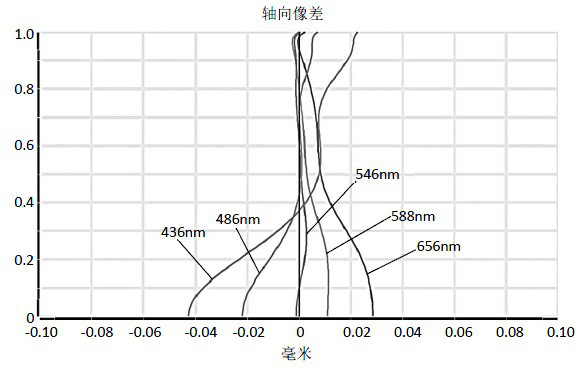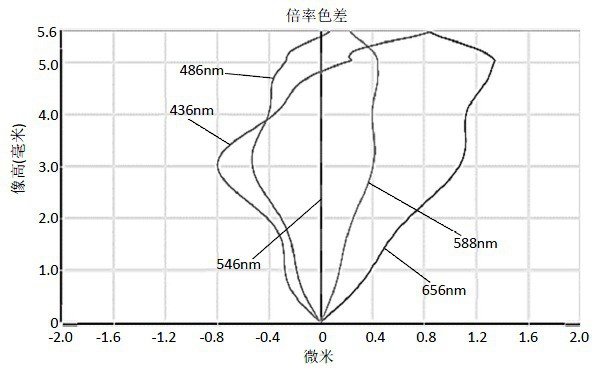Camera shooting optical lens
A technology of optical lens and total optical length, applied in the field of optical lens, can solve the problems of unreasonable setting of optical power, lens spacing and lens shape, unable to meet large aperture, ultra-thinning and so on
- Summary
- Abstract
- Description
- Claims
- Application Information
AI Technical Summary
Problems solved by technology
Method used
Image
Examples
no. 1 approach )
[0033] With reference to the drawings, the present invention provides an imaging optical lens 10. figure 1 Shown is the imaging optical lens 10 according to the first embodiment of the present invention. The imaging optical lens 10 includes nine lenses in total. Specifically, the imaging optical lens 10, in order from the object side to the image side, is: aperture S1, first lens L1, second lens L2, third lens L3, fourth lens L4, fifth lens L5, and sixth lens. Lens L6, seventh lens L7, eighth lens L8, and ninth lens L9. Optical elements such as an optical filter GF may be provided between the ninth lens L9 and the image plane Si.
[0034] In this embodiment, the first lens L1 has positive refractive power, the second lens L2 has negative refractive power, the third lens L3 has positive refractive power, the fourth lens L4 has negative refractive power, and the fifth lens L5 has positive refractive power. The sixth lens L6 has negative refractive power, the seventh lens L7 has po...
no. 2 approach )
[0167] Figure 5 It is a schematic diagram of the structure of the imaging optical lens 20 according to the second embodiment of the present invention. The second embodiment is basically the same as the first embodiment, and the meaning of the symbols is the same as that of the first embodiment, and only the differences are listed below.
[0168] In this embodiment, the seventh lens L7 has a negative refractive power.
[0169] Table 5 and Table 6 show design data of the imaging optical lens 20 according to the second embodiment of the present invention.
[0170] 【table 5】
[0171]
[0172] Table 6 shows aspheric surface data of each lens in the imaging optical lens 20 according to the second embodiment of the present invention.
[0173] 【Table 6】
[0174]
[0175] Table 7 and Table 8 show the design data of the inflection point and stagnation point of each lens in the imaging optical lens 20 of the second embodiment of the present invention.
[0176] 【Table 7】
[0177]
[0178] 【Table 8】 ...
no. 3 approach )
[0184] Picture 9 It is a schematic diagram of the structure of the imaging optical lens 30 of the third embodiment of the present invention. The third embodiment is basically the same as the first embodiment, and the meaning of the symbols is the same as that of the first embodiment, and only the differences are listed below.
[0185] In this embodiment, the object side surface of the seventh lens L7 is concave at the paraxial position, the object side surface of the ninth lens L9 is convex at the paraxial position, and the seventh lens L7 has negative refractive power.
[0186] Table 9 and Table 10 show design data of the imaging optical lens 30 of the third embodiment of the present invention.
[0187] 【Table 9】
[0188]
[0189] Table 10 shows the aspheric surface data of each lens in the imaging optical lens 30 of the third embodiment of the present invention.
[0190] 【Table 10】
[0191]
[0192] Table 11 and Table 12 show the design data of the inflection point and stagnation poi...
PUM
 Login to View More
Login to View More Abstract
Description
Claims
Application Information
 Login to View More
Login to View More - R&D
- Intellectual Property
- Life Sciences
- Materials
- Tech Scout
- Unparalleled Data Quality
- Higher Quality Content
- 60% Fewer Hallucinations
Browse by: Latest US Patents, China's latest patents, Technical Efficacy Thesaurus, Application Domain, Technology Topic, Popular Technical Reports.
© 2025 PatSnap. All rights reserved.Legal|Privacy policy|Modern Slavery Act Transparency Statement|Sitemap|About US| Contact US: help@patsnap.com



